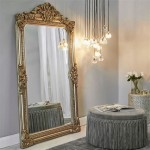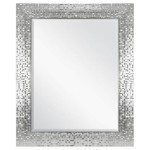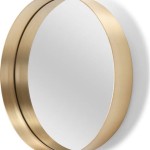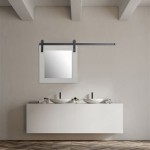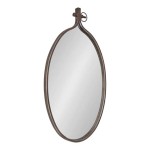1920s Vanity with Round Mirror: A Reflection of Elegance and Functionality
The 1920s represent a pivotal era in design and aesthetics, marked by a distinct shift towards modernism and Art Deco influences. This period witnessed the rise of glamorous interiors, and the vanity table, specifically one with a round mirror, became a central element in the boudoir, reflecting the changing social landscape and the newfound emphasis on personal grooming and style.
Vanities of this period often featured distinct characteristics that set them apart from earlier iterations. Wood choices ranged from the rich, dark tones of mahogany and walnut to lighter, more exotic woods like bird's-eye maple or burl walnut. These woods were often highly polished to a gleaming sheen, reflecting the decade's fascination with luxury and opulence. Inlay work, featuring contrasting wood or mother-of-pearl, added to the decorative appeal, creating intricate geometric patterns or floral motifs typical of Art Deco style.
The defining feature of these vanities, the round mirror, contributed significantly to the overall aesthetic. Unlike the rectangular mirrors of previous eras, the circular shape introduced a softer, more feminine touch. These mirrors were often framed in the same wood as the vanity, maintaining a cohesive design. Some mirrors featured etched or beveled detailing, further enhancing their elegance. The size of the mirror varied, with some being quite large to provide ample viewing space, while others were smaller and more compact, depending on the overall dimensions of the vanity.
Functionality was another key aspect of 1920s vanity design. Drawers and compartments provided ample storage for cosmetics, perfumes, and other beauty essentials. These storage spaces often featured elegant hardware, such as brass or nickel pulls and knobs, adding to the vanity's overall decorative appeal. Some vanities also incorporated small cabinets or shelves, providing additional storage and display options.
The design of the vanity's legs also contributed to its overall style. Many vanities featured cabriole legs, a classic design element characterized by a curved S-shape. Others incorporated straight, tapered legs, reflecting the growing influence of modernism. The feet of the legs often featured decorative elements, such as claw feet or small brass caps, adding a touch of refinement.
The 1920s vanity with a round mirror became more than just a functional piece of furniture; it served as a symbol of the changing times. Women were embracing new social freedoms and expressing their individuality through fashion and beauty. The vanity became a personal sanctuary, a dedicated space for self-care and beautification rituals.
The rising popularity of Hollywood further influenced the design and appeal of these vanities. Glamorous movie stars were often depicted using vanities in their dressing rooms, further solidifying their association with elegance and sophistication. This association contributed to the vanity's desirability and its integration into stylish homes of the era.
The 1920s witnessed a significant shift in manufacturing processes. Mass production techniques became more prevalent, making furniture more accessible to a wider range of consumers. While handcrafted pieces remained highly valued, the increased availability of factory-produced vanities meant that more people could incorporate this stylish and functional piece into their homes.
Today, 1920s vanities with round mirrors remain highly sought-after by collectors and interior design enthusiasts. Their enduring appeal lies in their timeless elegance, functional design, and historical significance. They offer a glimpse into a glamorous era and provide a touch of vintage charm to contemporary interiors.
Restoration of these antique pieces requires careful consideration and expertise. Preserving the original finish, hardware, and mirror is crucial to maintaining the vanity's historical integrity and value. When undertaking restoration, consulting with experienced antique furniture restorers is highly recommended.
The influence of the 1920s vanity with round mirror can be seen in contemporary furniture design. Modern interpretations often incorporate elements inspired by the Art Deco aesthetic, such as geometric shapes, luxurious materials, and metallic accents. These contemporary pieces offer a nod to the glamour of the past while incorporating modern functionality and design sensibilities.
The enduring popularity of this design speaks to the power of classic aesthetics. The combination of a beautifully crafted wooden frame, a reflective round mirror, and practical storage solutions continues to resonate with individuals seeking to create a stylish and functional space for personal care and grooming.

1920s Art Deco Vanity Mirror

Furniture Hq Guide Old Vanity Art Deco Bedroom Waterfall

1920s Art Deco Vanity Mirror Chairish

Large Round Mirror Antique Vanity Mirrors

Art Deco Vanity With Large Round Mirror Chairish

1920s Art Deco Vanity Mirror Chairish

Vintage Vanity Roundup The Craft Blogger

Vintage Unred 1930s Era Art Deco Waterfall Vanity With Round Mirror Stool

1920 S Art Deco Waterfall Vanity As Seen On American 1920s Funky Furniture

Sold 1920s Antique Vanity With Mirror And Stool Dressing



